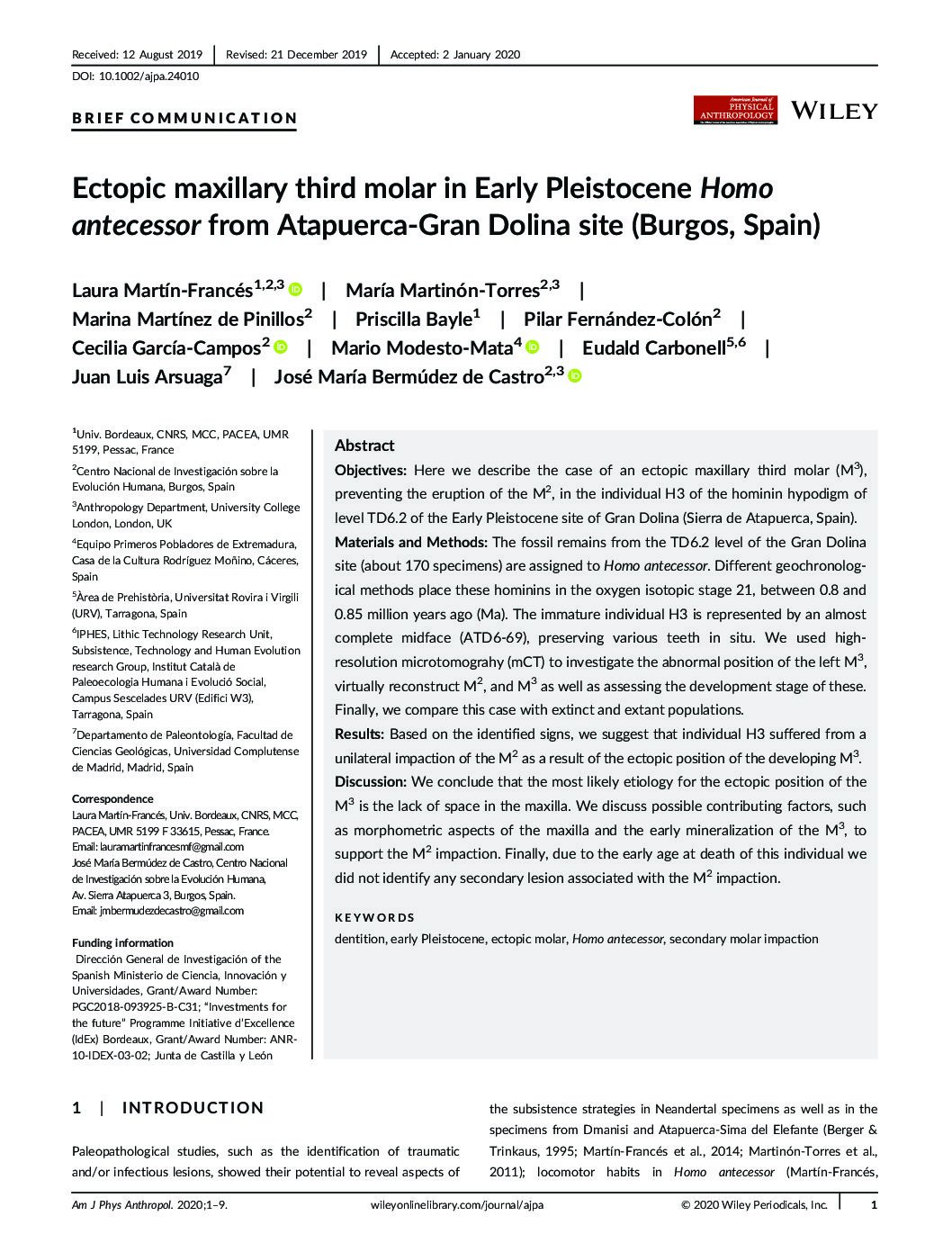Ectopic maxillary third molar in Early Pleistocene Homo antecessor from Atapuerca-Gran Dolina site (Burgos, Spain)
Objectives Here we describe the case of an ectopic maxillary third molar (M3), preventing the eruption of the M2, in the individual H3 of the hominin hypodigm of level TD6.2 of the Early Pleistocene site of Gran Dolina (Sierra de Atapuerca, Spain). Materials and Methods The fossil remains from the TD6.2 level of the Gran Dolina site (about 170 specimens) are assigned to Homo antecessor. Different geochronological methods place these hominins in the oxygen isotopic stage 21, between 0.8 and 0.85 million years ago (Ma). The immature individual H3 is represented by an almost complete midface (ATD6-69), preserving various teeth in situ. We used high-resolution microtomograhy (mCT) to investigate the abnormal position of the left M3, virtually reconstruct M2, and M3 as well as assessing the development stage of these. Finally, we compare this case with extinct and extant populations. Results Based on the identified signs, we suggest that individual H3 suffered from a unilateral impaction of the M2 as a result of the ectopic position of the developing M3. Discussion We conclude that the most likely etiology for the ectopic position of the M3 is the lack of space in the maxilla. We discuss possible contributing factors, such as morphometric aspects of the maxilla and the early mineralization of the M3, to support the M2 impaction. Finally, due to the early age at death of this individual we did not identify any secondary lesion associated with the M2 impaction.

